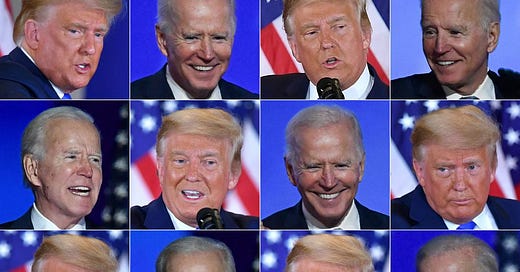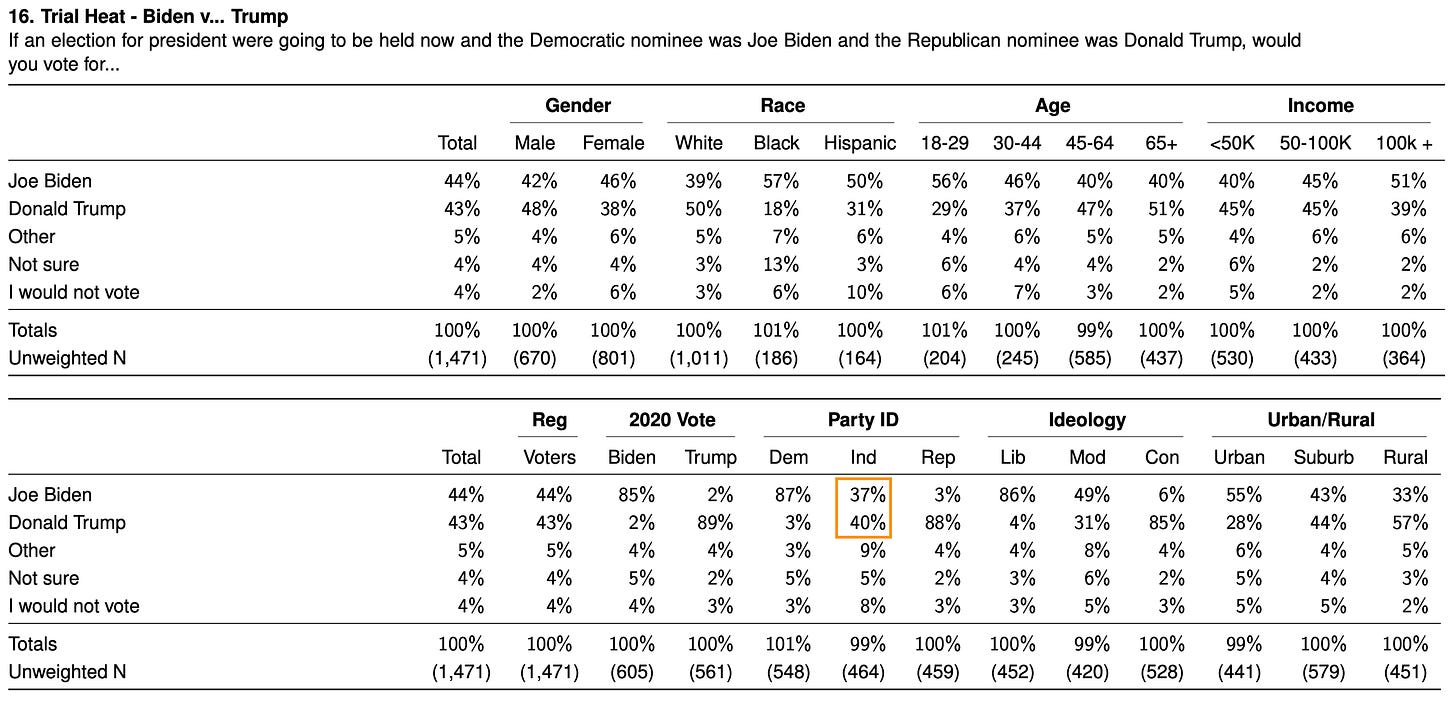Political Trench Warfare
2024 will be an excruciating game of inches with no one factor likely tipping the balance for either Biden or Trump.

America is about to face one of its longest general elections ever. With no real competitive primary season in either party, the field is basically cleared for a Biden and Trump rematch in 2024, barring some legal or health related development over the next few months.
Roughly ten months out from the November election, polls show the two candidates and their respective parties locked in a split contest with no clear leader nationally or in the battleground states. Trump holds slight leads in some polls, Biden leads in others—all within the margin of error.
In the latest Economist/YouGov poll of registered voters conducted in early January, Biden holds a marginal one-point lead over Trump, 44 percent to 43 percent, with 13 percent of the electorate genuinely up for grabs—five percent voting for some other candidate, four percent undecided, and four percent planning not to vote. (Among the “other” group, Robert F. Kennedy, Jr. holds a slight lead with about one quarter of the third-party vote and the rest splintered among other candidates or unsure.)
In terms of possible vote switching, only two percent of 2020 Biden voters currently indicate they will vote for Trump, and an equal two percent of 2020 Trump voters say they will vote for Biden—a wash. Likewise, independent voters break roughly even with 40 percent backing Trump and 37 percent backing Biden. And among those who did not vote in 2020, an equal 33 percent say they will vote for either Biden or Trump, respectively, according to TLP/YouGov polling from this fall.
Realistically, is there any one issue, national event, or campaign message that is likely to overcome this political game of inches? Nothing that any honest analyst would predict.
In terms of issues, abortion or immigration could conceivably tip the scales one way or the other with contested voters and core partisans—or cancel each other out as motivators. A strong national economy could help Biden this fall, while lingering concerns about inflation and overall financial security could help Trump. Perhaps the Israel-Hamas war influences the decisions of small percentages of voters in states like Michigan or Arizona enough to tip the election—or maybe it doesn’t matter at all. Anti-MAGA, pro-democracy messaging could certainly rally a slim Democratic majority to victory while anti-Biden, anti-incumbent sentiment could give Trump the edge. Biden’s temperament and demeanor arguably give him the advantage in a character contest against Trump, while his age and voters’ anti-establishment views cut against him.
Maybe something decisive will drive overall turnout in one direction—or encourage undecided, third-party, and non-voters to shift towards one candidate over the other—or maybe not.
In an election this tight with so few people up for grabs, who knows?
Americans are staring at an agonizingly prolonged election in 2024 with the ultimate decision about who wins likely in the hands of a very small portion of voters motivated by a general sense of displeasure and uncertainty about the state of the country, and a mixed set of concerns and political opinions.
Basic matters of campaign competency—like state party organization; voter registration, contact, education, and turnout plans; and absentee or early voting measures—could matter as much or perhaps more than any one silver bullet issue, message, or intervening event.
Political strategists or pundits who claim with supreme confidence that this exact issue or that specific strategy will determine the outcome of the election are deluding themselves—or chasing rich people’s money to spend on dubious campaign and advertising schemes.
How the 2024 election will turn out—and for what reasons—is anyone’s guess. It’s trench warfare from now until November.






